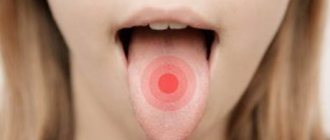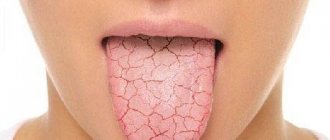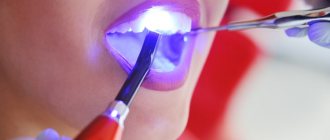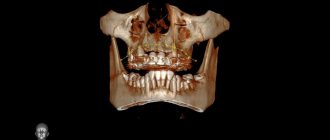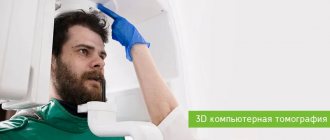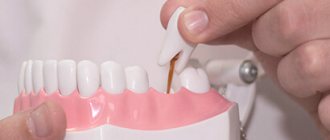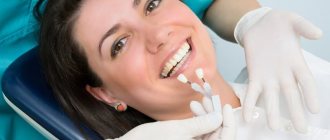Author of the article:
Soldatova Lyudmila Nikolaevna
Candidate of Medical Sciences, Professor of the Department of Clinical Dentistry of the St. Petersburg Medical and Social Institute, Chief Physician of the Alfa-Dent Dental Clinic, St. Petersburg
Caries is a disease that affects all people, regardless of their gender, age and place of residence. Caries is caused by bacteria that settle in the oral cavity due to poor nutrition and poor oral hygiene.
How are caries treated in dentistry?
If we are talking about caries, which has already overcome the stain stage and has begun to affect the soft and hard tissues of the teeth, then only a qualified dentist can help with its treatment. How to treat dental caries in a particular patient, separately about caries during pregnancy, the doctor determines individually after a visual examination of the tooth, an x-ray and other diagnostic methods.
Most often, when treating caries, the following algorithm of actions is followed:
- Cleaning teeth from plaque. The dentist removes plaque and deposits (both soft and hard) from the tooth. To do this, the doctor uses professional tools and special abrasive pastes. Massive dental plaque is removed using special ultrasonic attachments.
- Determining the color of the tooth being treated. Using a special scale, the dentist selects the shade of the tooth enamel so that the filling is not visually noticeable in the future.
- Anesthesia. If we are talking about the middle or deep stages of caries, the doctor uses anesthesia. The dentist determines the choice of a specific drug, as well as the place of its administration, on an individual basis.
- Removal of affected tissue. At this stage, the dentist drills out the edges of the enamel and removes the caries-affected area on the dentin. It is very important that all carious tissue is carefully removed and cleaned, otherwise, subsequently, under the filling, caries will continue its destructive effect and lead to various complications, such as periodontitis or pulpitis.
- Isolation of the tooth being treated from saliva. To do this, the dentist can use gauze or cotton swabs, which are used to cover the tooth on all sides. Also, to isolate from saliva, the doctor can use a modern rubber dam - a special latex with holes. It can be used to isolate several teeth at once.
- Treatment of carious cavity with antiseptics and medications.
- Etching is the treatment of dentin and tooth enamel with acid. After the gel penetrates deeply into the tooth tissue, its remnants are washed off and the tooth surface is dried.
- Insulating gasket. It is placed at the bottom of the cavity to avoid shrinkage of the filling.
- Direct tooth filling. On an individual basis, the dentist selects a filling material and places a filling, thereby restoring the original shape of the tooth.
- The final stage of caries treatment, which includes grinding and polishing the installed filling. The surface of the filling will become smooth, and the patient will not have any unusual sensations in the mouth.
Laser dental treatment
The latest laser systems have become firmly established in today's medicine; they are also successfully used in dentistry. Laser dental treatment is an opportunity to quickly, and most importantly - without the slightest discomfort and generally without pain, treat caries in the initial stages, treat gum diseases, and carry out whitening and hygiene procedures. The laser has become a real salvation for those people who are afraid to have their teeth treated, because it allows them to undergo treatment without experiencing any fear or pain, even without anesthesia.
A laser beam can be used instead of the notorious dental drill, the mere mention of which may be unpleasant for you - the laser successfully and very carefully removes areas of the tooth affected by caries, while simultaneously disinfecting dental tissues. It is also used instead of a scalpel during implantation, as well as some other dental operations. Unlike a scalpel, the laser beam acts bloodlessly, very accurately and painlessly, while ensuring complete sterility of the surgical field.
Dentist at the 32 Dent clinic Andrey Andreevich Koloskov says: “Our clinic uses the latest laser systems, the work of which many of our patients have already been able to evaluate. Yes, laser dental treatment is more expensive than usual, but for those people who are not too fond of being treated by dentists, it is optimal. Anesthesia is usually not required for this treatment because it does not cause any pain or discomfort.”
How to treat caries using traditional methods
Of course, it will not be possible to cure even average caries using traditional methods; you can only temporarily relieve the pain while you wait for an appointment with a doctor.
For this you can use:
- saline mouth rinse;
- camphor alcohol - by moistening a cotton swab with it, you can wipe not only the sore tooth, but also the gum near it;
- fir oil - a swab moistened with it should be placed on the tooth and adjacent gum and held for half an hour;
- alcohol infusion of horseradish - grate the horseradish, pour in vodka, leave for a couple of days, strain and apply a swab moistened with it to the sore tooth for ten minutes;
- infusion of onion peels - take a few spoons of onion peels, pour boiling water, leave for 24 hours, strain and rinse the mouth several times a day;
- garlic juice - get garlic juice using a blender or a garlic press, moisten a tampon in it and apply it to the tooth for 10-15 minutes.
You can also use traditional methods to treat caries in the initial stage - the spot stage. Here they will come to the rescue:
- sage decoction: you can rinse your mouth with the prepared solution almost an unlimited number of times;
- infusion of raspberry and mint leaves: leave the chopped leaves in wine vinegar for three days, strain and rinse your mouth with the resulting infusion;
- chicory root: fresh root can be chewed, and dried, pour water, leave and rinse your mouth;
- laundry soap: prepare a solution of soap and water and rinse your mouth with it;
- propolis: place a piece of propolis on a sore tooth, press with a cotton swab and leave for a while.
Tooth root caries and its etiology on video
Risk group
The risk group for developing tooth root caries includes people who have periodontal disease. Deep periodontal pockets filled with dental plaque contribute to the penetration of the carious process into the pulp.
Elderly people are also at risk. They often experience gum recession, where the roots of the teeth are exposed. Against the background of age-related changes, the activity of the antiseptic properties of saliva decreases. This creates favorable conditions for the growth of bacteria and periodontal damage.
Common causes of root caries:
- Gum diseases. Any inflammatory processes that affect the soft tissues and ligaments of the tooth can lead to carious lesions of the pulp.
- Cervical caries. The lesion in this disease appears near the gum and can be invisible to patients for a long time, especially when located on the back surface of the teeth. Radical caries is more common against the background of exposure of the necks of the teeth. Timely treatment prevents infection from entering the nerve tissue.
- A decrease in the amount of saliva or a decrease in its antiseptic properties. In this condition, dry mouth occurs, creating conditions favorable for the proliferation of cariogenic microorganisms. Dry mouth can occur when taking certain medications, as well as due to age-related changes.
- Installation of a metal-ceramic crown. Dental prosthetics with crowns causes a slight receding of the gum level. This can lead to exposed necks of teeth and exposed roots.
Why can't you try to get rid of caries yourself?
Only a dentist knows how to treat caries. Under no circumstances should you try to get rid of it yourself. Unfortunately, there are often cases when patients come to the dental clinic who tried to scrape off caries themselves and thereby only worsened the condition of their oral cavity.
Among these “barbaric” methods:
- removing carious stains or tartar using a file or sandpaper, which will cause severe damage to the enamel and will only accelerate the development of caries;
- cleaning the carious area with a needle: even if it is possible to remove the darkened area in this way, this will not stop the process of tooth decay;
- whitening dark carious spots using bleach or other bleaches: this can not only damage the tooth, but also cause a burn to the mucous membrane;
- whitening with vinegar: you can not only worsen the condition of damaged enamel, but also burn your gums and the inside of your cheeks.
Our patients
Patient recommendations
Akhmedkhanov Said Rashidovich
Dental surgeon, general dentist, implantologist, orthopedic dentist, dental therapist.
Make an appointment 8 (499) 520-98-70
Make an appointment
Recommendations from patient Alekseeva O.V.
Akhmedkhanov Said Rashidovich
Dental surgeon, general dentist, implantologist, orthopedic dentist, dental therapist.
Make an appointment 8 (499) 520-98-70
Make an appointment
Recommendations from patient Zolotareva S.V.
Akhmedkhanov Said Rashidovich
Dental surgeon, general dentist, implantologist, orthopedic dentist, dental therapist.
Make an appointment 8 (499) 520-98-70
Make an appointment
Recommendations from patient Vera
Akhmedkhanov Said Rashidovich
Dental surgeon, general dentist, implantologist, orthopedic dentist, dental therapist.
Make an appointment 8 (499) 520-98-70
Make an appointment
Recommendations from patient Mikhail Ivanovich
Akhmedkhanov Said Rashidovich
Dental surgeon, general dentist, implantologist, orthopedic dentist, dental therapist.
Make an appointment 8 (499) 520-98-70
Make an appointment
Collapse
Why is it necessary to treat caries?
If you ignore the first symptoms of the disease and do not consult a dentist, then caries will continue its destructive effect and eventually reach the pulp of the tooth. After this, more serious treatment will be required, including removal of nerves and filling of canals. If you continue to ignore caries, you will not only have to endure toothache from time to time, but also prepare for the fact that in a couple of years you will lose your tooth forever. Keep in mind: a tooth that is filled in several places will last longer than a tooth that gradually decays. In addition, if the root remains alive, then it will be possible to put a crown on it, which is preferable to a denture.
You also need to monitor your health after the tooth is healed. If you feel discomfort in the area of the healed tooth under the filling, then it is quite possible that a gap has formed there where food can penetrate. As a result, caries may develop under the filling. After assessing the situation, the dentist may suggest removing the old filling, re-cleaning the cavity and installing a new one.
What it is?
Superficial caries is characterized by the appearance of a yellowish carious spot on the surface of the enamel. A feature of this disease is the absence of damage to the deep layers. This stage is transitional, that is, in the absence of treatment for superficial caries, the infection gradually moves deeper and affects the entire tooth.
Most often, superficial caries is localized in depressions, the so-called fissures. According to statistics, initial carious lesions are observed in 85% of the population, but not everyone knows about it. For the same reason, many patients come to the dentist too late, when the tooth is completely susceptible to deep caries.
Prevention of caries
What should you do to avoid caries?
- Regularly brush your teeth with high-quality toothpastes, for example, from the Asepta series. They ensure a sufficient supply of minerals to the enamel, break down plaque, and gently whiten.
- Limit the amount of sweets.
- Avoid eating sweets and starchy foods as a snack, before bed or immediately after brushing your teeth.
- Visit the dentist at least twice a year.
- Take care of your gum health.
- Follow the principles of proper nutrition.
- Choose the right oral and dental care products, and change your toothbrush regularly.
- Take vitamins and, if necessary, calcium, fluorine and phosphorus supplements.
- Eat solid foods regularly, such as apples and carrots, but at the same time avoid frequent consumption of seeds and nuts.
- Try to rinse your mouth after every meal, and if this is not possible, then at least chew sugar-free gum.
Psychological aspect
To prevent children from being afraid of dentists, clinics use distracting maneuvers. While waiting and even during treatment, children can be shown their favorite cartoons. You can read a fairy tale, play games. Some clinics even have special rooms where boys and girls can relax and forget about the fear of an unfamiliar doctor.
The staff in children's clinics dress in bright clothes, and you can see smile masks on their faces. Each office has a thoughtful interior that resembles not a hospital, but a gaming center. The best clinics employ a psychologist who helps the child overcome his fear of dental treatment. The rest of the staff also takes courses in communicating with children.
A child’s teeth can be treated without general anesthesia, but it is better to use this safe method today. The main thing is to make it clear to the child from a very early age that the dentist is not a terrible doctor, but a friend of teeth from childhood.
Author: Zhukov M.A.
Clinical researches
The effectiveness of ASEPTA series products has been repeatedly proven clinically. For example, multiple clinical studies have demonstrated that using ASEPTA propolis gum gel for a week can reduce gum inflammation by 31%. And the two-component mouth rinse ASEPTA ACTIVE more effectively combats the causes of inflammation and bleeding compared to single-component rinses - it reduces inflammation by 41% and reduces bleeding gums by 43%.
Sources:
- Comparative clinical evaluation of the effectiveness of treatment of traumatic lesions of the oral mucosa IORDANISHVILI A.K. *,** Doctor of Medical Sciences, Professor, Professor of the Department *Department of Orthopedic Dentistry of the Federal State Budgetary Educational Institution of Higher Education “North-Western State Medical University named after. I.I. Mechnikov" of the Ministry of Health of the Russian Federation (rector - Doctor of Medical Sciences Sayganov S.A.); **Department of Maxillofacial Surgery and Surgical Dentistry of the Federal State Budgetary Military Educational Institution of Higher Education “Military Medical Academy named after S.M. Kirov" of the Ministry of Defense of the Russian Federation (chief - Corresponding Member of the Russian Academy of Sciences, Professor A.Ya. Fisun).
- The role of anti-inflammatory rinse in the treatment of periodontal diseases (L.Yu. Orekhova, A.A. Leontyev, S.B. Ulitovsky) L.Yu. OREKHOVA, Doctor of Medical Sciences, Prof., Head of Department; A.A. LEONTIEV, dentist; S.B. ULITOVSKY, Doctor of Medical Sciences, Prof. Department of Therapeutic Dentistry of St. Petersburg State Medical University named after. acad. I. P. Pavlova
- Report on the determination/confirmation of the preventive properties of personal oral hygiene products “ASEPTA PLUS” Remineralization doctor-researcher A.A. Leontyev, head Department of Preventive Dentistry, Doctor of Medical Sciences, Professor S.B. Ulitovsky First St. Petersburg State Medical University named after. acad. I.P. Pavlova, Department of Preventive Dentistry
- Report on determining/confirming the preventive properties of toothpaste “ASEPTA PLUS” COFFEE and TOBACCO Author: doctor-researcher A.A. Leontyev, head Department of Preventive Dentistry, Doctor of Medical Sciences, Professor S.B. Ulitovsky. First St. Petersburg State Medical University named after. acad. I.P. Pavlova, Department of Preventive Dentistry
- Report on determining/confirming the preventive properties of toothpaste “ASEPTA PLUS” GENTLE WHITENING” Author: doctor-researcher A.A. Leontyev, head Department of Preventive Dentistry, Doctor of Medical Sciences, Professor S.B. Ulitovsky First St. Petersburg State Medical University named after. acad. I.P. Pavlova, Department of Preventive Dentistry


